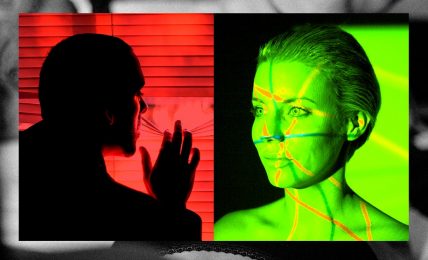© Mary Altaffer/AP
A patient receives the monkeypox vaccine during a vaccination clinic at the OASIS Wellness Center on Aug. 19 in New York. (Mary Altaffer/AP)
It’s time for gay and bisexual men to pay attention to mpox, formerly known as monkeypox, again.
That’s the message from public health authorities and LGBT health providers as cases rise in some countries and small clusters of infections in vaccinated people have been detected in Chicago and France.
The World Health Organization on May 11 said mpox no longer presents a public health emergency of international concern because global cases have declined and countries are better equipped to respond, but that doesn’t mean the threat is eliminated. Last year’s mpox outbreak started in the spring, driven in part by festivals, pride events and other celebrations popular among gay men where attendees are traveling and having sex with new partners.
“I don’t think it’s a very high risk right now for people, but it is something they need to be aware of and take action for as they plan for summer,” said Demetre Daskalakis, a top federal official on the mpox response.
How the monkeypox outbreak revealed a path for quelling viruses
Public health authorities aren’t expecting a repeat of last year’s explosion of cases, more than 30,000 in the U.S. and 87,000 globally, because of greater awareness and widespread vaccination and protection from earlier infections. But smaller scale outbreaks are still possible, including in those with some immunity. Officials warned last year that they could not say how long protection against mpox from the Jynneos vaccine would last.
Here’s what you need to know.
Who is at risk for mpox and how does it spread?
Last year’s outbreak was mostly concentrated in men who have sex with men, and the virus did not significantly spread in other groups as originally feared.
Mpox spreads through close and prolonged skin-to-skin contact, which there’s plenty of during sex. Not every gay man is considered at risk for contracting mpox, and those with multiple or anonymous partners are more likely to be exposed. There are other factors at play, including the fact that it’s easier to become exposed to a disease when you have an overall smaller pool of sexual partners than heterosexuals.
Sex isn’t the only way mpox spreads, and there have been cases reported in children and other people living in the same household as someone with mpox. That could be possible through hugging or sharing contaminated bedding.
That mpox did not spread significantly outside the gay community last year suggests the virus doesn’t easily spread in those ways.
Mpox can cause painful lesions and force people to isolate for weeks. It has been deadly for people with weakened immune systems, particularly those with untreated HIV.
Five men share stories of battling mpox
How many mpox cases are there?
There’s no sign of a U.S. resurgence of mpox, which is now a sporadic event. The seven-day average of new cases has remained below four since early February, according to the Centers for Disease Control and Prevention.
But the Chicago Department of Public Health has issued an alert warning of a local resurgence. The agency has reported 14 cases in recent weeks, including 10 people who were fully vaccinated. Eighty percent of the patients were men who have sex with men, consistent with past outbreaks, and officials do not know the sexual orientation of the other patients. The breakthrough cases appear mild, which experts say is a sign that vaccines are preventing serious illness.
“CDPH continues to stress that while vaccination will not make someone 100 percent immune to mpox, it’s still an important tool to stop the spread of the virus,” the agency said in a statement. “People who are vaccinated still should continue to avoid close, skin-to-skin contact with someone who has mpox.”
Experts say the Chicago outbreak should prompt others to remain vigilant.
“We know that mpox has fallen off the radar due to months without any cases being reported in multiple jurisdictions across the U.S., but with this cluster popping up, it needs to be brought to the forefront again,” said Joseph Cherabie, associate medical director of the St. Louis County Sexual Health Clinic in Missouri.
Monkeypox dilemma: How to warn gay men without fueling stigma
Does the mpox vaccine work?
The Jynneos vaccine is about 70 percent effective for those who have received two doses and 30 percent for those who have received one dose, according to preliminary estimates, with additional data to be released next week.
About 1.6 million people are considered at-risk for mpox, but only 37 percent have received at least one shot, and 23 percent have received both shots. Public health officials say news of vaccinated people getting mpox shouldn’t dissuade people from getting shots. They draw comparisons to coronavirus vaccines — which are not foolproof against infections, but reduce severity of disease.
Now is the time to get vaccinated for optimal protection ahead of pride and summer because shots are supposed to be administered at least four weeks apart, and full protection comes 14 days after the second shot.
“Our best defense is a good offense, and the more people we get vaccinated, even with a vaccine that doesn’t have 100 percent protection, the more likely we are to control mpox,” Daskalakis said.
Third shots as booster doses or vaccines in people who have been previously infected are not recommended.
Inside America’s monkeypox crisis – and the mistakes that made it worse
Where can I get vaccines?
Unlike last summer, the United States has enough vaccines for at-risk people this year, according to Daskalakis.
The vaccination campaigns aren’t as prominent with the worst of the outbreak over. The best place to start a vaccine search is your local health department. The CDC also has an online vaccine finder.
To stretch vaccine supplies, federal officials urged vaccine administrators to administer the Jynneos vaccine intradermally between skin layers. That method prompted complaints about scarring and red splotches on forearms, a reason some did not return for their second shot. Intradermal shots can now be administered in less conspicuous areas such as the shoulder or upper back — areas Daskalakis noted would be covered by tank tops.
People can request shots administered through a traditional injection in the fat or muscle tissue, but Daskalakis said intradermal remains the preferred method and is just as effective.
What else can I do to protect myself and others from mpox?
Sexual health providers say calls for total abstinence are ineffective, especially when there’s no current surge, but offer other tips to lower risk while staying sexually active.
1) Check yourself and your partner for unusual rashes before sex. This reduces risk, but it’s not foolproof because people can also spread the virus before showing symptoms.
2) Seek testing and treatment if you feel sick and develop unusual lesions. If your provider is unfamiliar with mpox, you can show them these resources from the CDC.
3) Keep contact information for sexual partners to notify each other of mpox exposures. Even if someone has not been vaccinated, shots administered in the first days after exposure can prevent infection or reduce the severity of a case.
4) If you are infected, you can enroll in clinical trials studying the efficacy of antiviral tecovirimat, also called TPOXX, for mpox. It is the only drug available as treatment.
MPox spurs debate about how to talk about sex
Why did monkeypox get renamed to mpox?
The WHO and other public health authorities renamed monkeypox to mpox last year because the original name was controversial. It’s misleading since mpox likely originated from rodents, not monkeys (where the virus was first detected, spurring the name). Health officials worried the term “monkeypox” can stigmatize people who contract the virus.
You’ll still hear “monkeypox” used by health care providers and in the media because that’s how many people know the virus.


